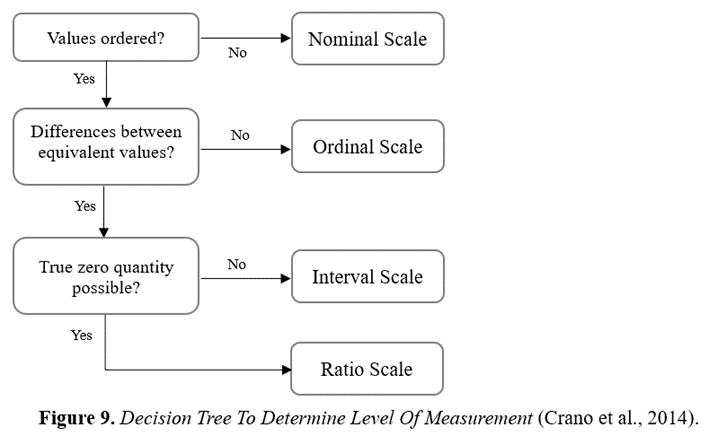Questionnaires are the primary data collection tool used in survey research. They are also referred to as survey instruments. This phase is considered the upfront work in survey research and determines everything else. To produce a valid measure instrument (questionnaire), clear and justifiable links must be between your indicators (questions) and the concepts you say you are measuring (Leavy, 2022).
There are many preexisting surveys available on a wide range of topics. Therefore, it is advisable to consult published research on your subject and available online databases to determine whether or not there are preexisting surveys you can use or draw from to answer your research questions. Often, you do not need to design a brand-new survey instrument.
Survey items, which are the questions in the questionnaire, are designed to help you test your hypotheses or answer your research questions. These hypotheses or research questions have been constructed regarding the variables you want to measure. Survey questions are designed to measure the concept you are interested in as precisely as possible. The questions you create around each concept (construct) in the study are how you operationalize your variables. They are the indicators that a variable is present or not.
The more multidimensional a variable concept is, the more questions you will likely ask regarding that specific variable. For example, it could take many questionnaire items to address one concept (e.g., ECSI). Question construction is at the heart of survey research. Keep sight of your goal to measure the phenomenon of interest as precisely as possible.
There are some general dos and don'ts for creating practical survey questions. Beginning with the does, it is vital to use clear, understandable, and, whenever possible, highly specific language. There is a long list of things to avoid when constructing survey questions, including double-barrelled questions, double-negative questions, negatively phrased questions, biased or leading questions, questions with built-in assumptions, abbreviations, slang and contractions or ambiguous phrases, and questions that ask respondents to recall information from an unrealistic time frame.
Whether you create open-ended or forced-choice questions plays a role in determining the nature of your inquiries. Forced-choice or fixed-choice questions provide respondents with a range of response options to choose from. This type of question design enables you to collect a wide range of data, produce easily quantifiable data, and have high generalizability when large samples are used. Multiple choice, dichotomous, checklists, and rating and Likert scales are examples of different forced-choice questions.



